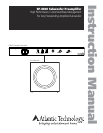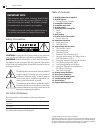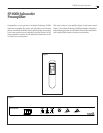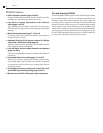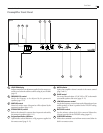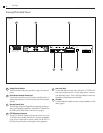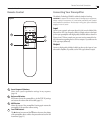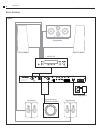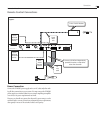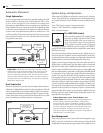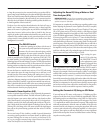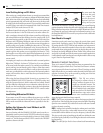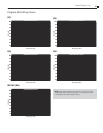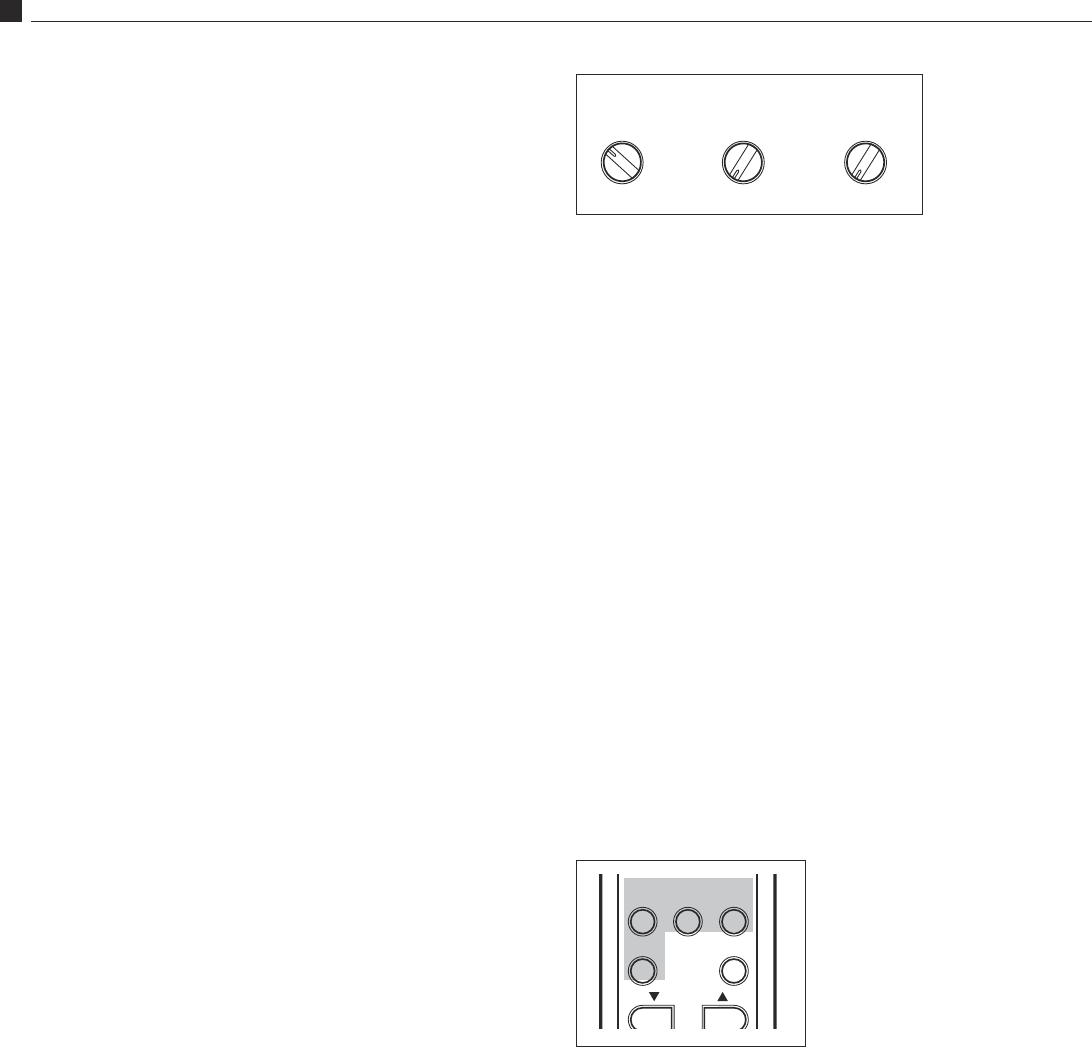
12
SP-8000 Subwoofer Preamplier
13
Instruction Manual
Setup & Operation
Level Setting Using an SPL Meter
When setting up a complete home theater we strongly recommend that
you use a Sound Pressure Level meter to calibrate the individual channel
levels. At the time of this writing Radio Shack® has one that is affordably
priced (approximately $40) and works well. However, for the best result
in setting up the levels and the parametric EQ you would be much better
served by using a true audio test instrument with a Real Time Acoustic
Analyzer (RTA) such as the Sencore® SP 295.
To calibrate channel levels using an SPL meter, turn on your system, put
the Processor/Receiver in the Test Mode and set its main volume con-
trol to a moderate volume level. If the volume control has a 0dB setting
with minus dB below and plus dB above 0, set the control to 0dB. Sit in
the prime listening position, set the SPL meter to the 70dB scale, Slow
Response, and C Weighting. Holding the meter in front of you with the
microphone pointed up at the ceiling, cycle the test tone from speaker to
speaker, setting every speaker (including the subwoofer) to 75dB using
the individual channel level adjustments in the Processor/Receiver. In
some cases, you may have to use the Processor/Receiver’s main volume
control to get the rst speaker you set (typically the left front) to 75 dB,
but from then on use the receiver’s internal level adjustments to set each
channel. These may only be accessible through the Processor/Receiver’s
remote control.
As tempting as it may be to set the subwoofer and/or surround speakers
higher than 75dB, don’t. Set them to 75dB and see if you can acclimate
to the sound as the lm maker created it. Try watching several different
movies and keep in mind that the goal is to have a system that sounds
like you’re actually in the movie. Just like in a well set up movie theater, in
most cases, you shouldn’t be consciously aware of the surround speaker’s
output at all, much less have so much bass that your furniture moves
across the room.
When using the latest discrete digital electronics we recommend set-
ting the SP-8000’s BASS LEVEL control to its THX/REF position and
using the Processor/Receiver’s built-in subwoofer level control. Should
you have difculty achieving the correct subwoofer volume this way or
should your Processor/Receiver not have a subwoofer level adjustment
built in, you can use the SP-8000’s main BASS LEVEL control to make
this adjustment.
Level Setting Without an SPL Meter
If you cannot use an SPL meter to calibrate the system try to set all the
speaker volumes to the same level using the Test Tones. Of course, this
will be much more difcult without the meter, especially for the sub-
woofer.
Setting the Subwoofer Level Without an SPL
Meter or Test Tones
Start your listening with the SP-8000's LOW PASS control set at the rec-
ommended crossover point (or in the THX/EXT position if you’re using a
THX Certied processor or unit with a built-in crossover). Set the PHASE
control to 0
0
, and the front panel BASS LEVEL control to the THX/REF
position as shown to the left.
Play some music that
you know has good
bass content, and
turn the Processor/
Receiver’s level con-
trol up until you just
start to hear the subwoofer working. Now, from your normal listening
position, determine whether the subwoofer is playing loudly enough and
lling in the bass frequencies of the music evenly. If adjustment is neces-
sary, change the processor’s subwoofer level adjustment setting (or use
the front panel BASS LEVEL control if your processor lacks a subwoofer
level adjustment).
How Much is Enough?
Sometimes people prefer more bass impact for movies than sounds
natural when reproducing music. The SP-8000 Preamplier offers 4
EQ settings plus the LEVEL TRIM to help maximize your enjoyment of
different source material. Remember however, the most common error
people make when setting up their system is to play the subwoofer (and
surrounds) too loudly. Although the Home Theater Police will not arrest
you for this act, should you desire the most accurate overall reproduction,
a well-balanced sound from deepest bass to highest treble is the best way
to get it. Have fun. Experiment. Enjoy.
Remote Control Functions
There are 4 custom EQ settings that have been programmed into the
SP-8000 (see graphs on back cover). These have been chosen to enhance
your enjoyment of both movies and music. These EQ settings are fairly
subtle in their effect, as we wanted to make them truly useful with a wide
selection of software. They can be accessed by pressing one of the four
EQ buttons on your Remote Control.
EQ1 - This EQ was primar-
ily designed to enhance music. It
reduces midbass frequencies by a
small, but noticeable amount. You
will nd that on many music sources
this will make the bass sound tighter
and more defined. It should make
individual bass notes easier to hear
as well. EQ1 can also be used to remove some overall bass boominess
when playing particularly bass heavy material.
EQ2 - This EQ was programmed to enhance the impact and punch of
special effects. It increases the bass output centered at 60Hz. Depending
upon the source material, EQ2 could also be used to add some warmth
to a bass shy music recording.
EQ3 - Another choice primarily intended to enhance movie and video
soundtracks. This one uses a more subtle increase of bass output cen-
tered at 80HZ with the addition of a very low frequency (subsonic) lter.
This gives you the option of punching up the mid-bass while at the same
time reducing the possibility of overdriving the subwoofer with extreme
low frequencies.
EQ4 - We call EQ4 After Dark. At lower volume levels human hearing
SA-700
Servo Controlled
Subwoofer Amplifier
Atlantic Technology
®
I
NNOVATIVE
H
OME
T
HEATER



